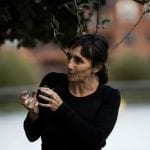Brett Bloom: What forms of art making can we develop address the challenges and urgencies of rapid climate breakdown?
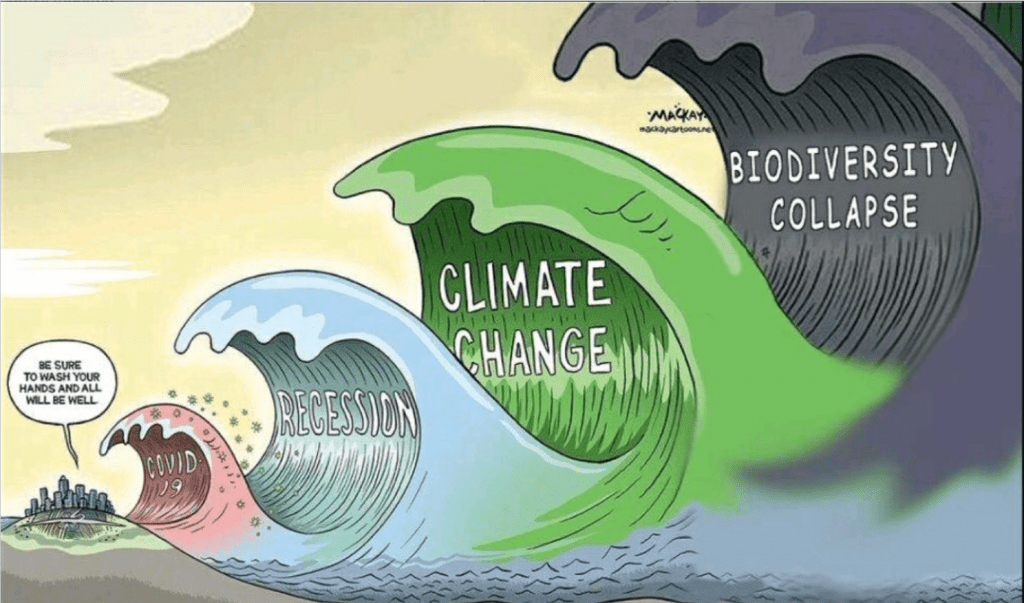
My intention is to offer broader, holistic, multi-dimensional, often multi-faceted opportunities for exchange, involvement and connection between different people and with the places we are in with their own multi-species communities. Weaving together – ideas – processes- different disciplines – different people – different age groups. Creating the conditions for people involved to be themselves fully, creatively, dynamically in a place with others, without hierarchy. Work where people can explore their own personal relationships to their communities (multi-species communities) and places (vibrant living spaces with evolving flows of energy and life forms) within wider earth systems.
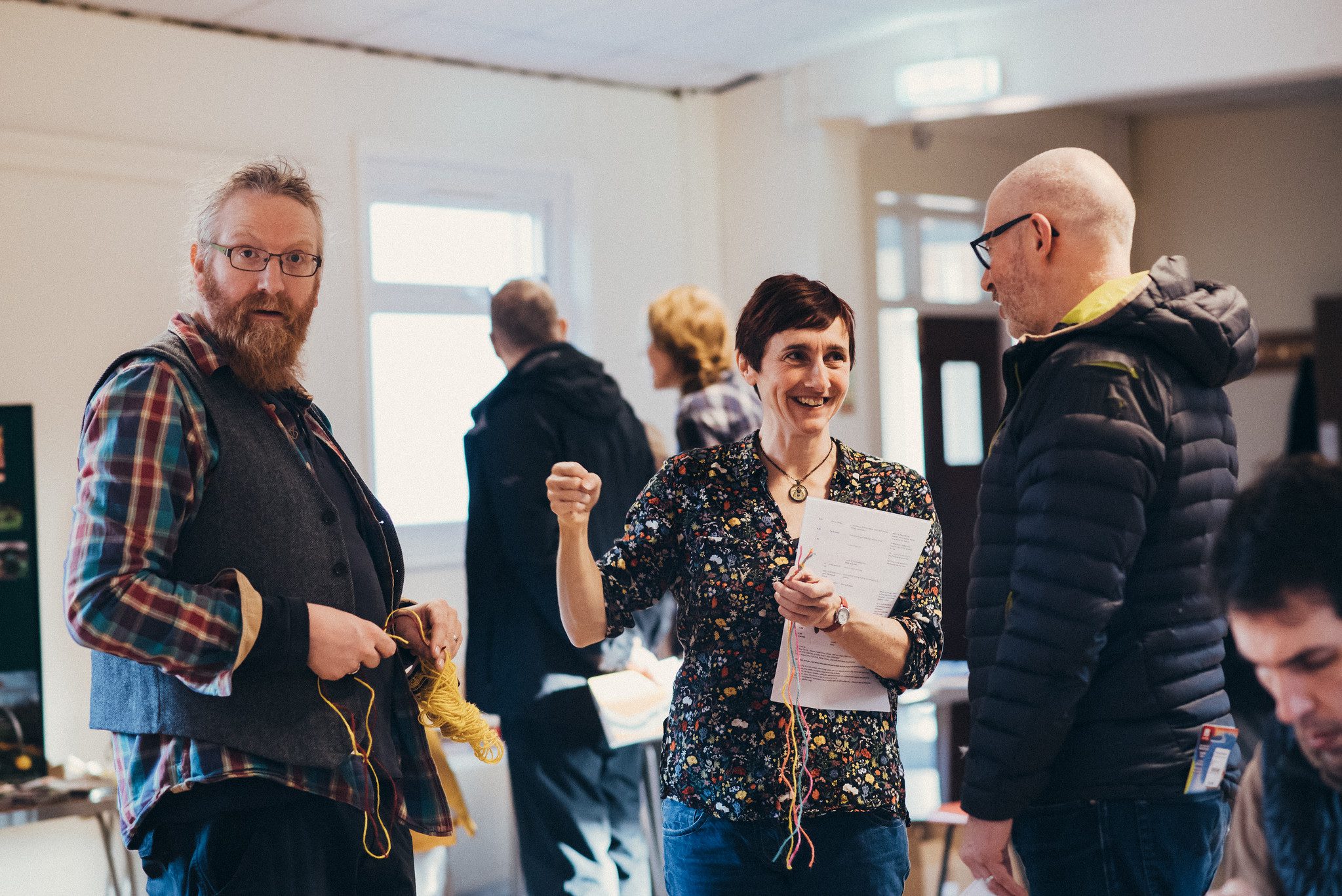
My work takes place mostly outdoors- woods, parks, on the street or in community spaces. The public places and spaces which I work in are hugely important and I give this a lot of consideration – in terms of visual presence, aesthetics, comfort, welcome, ease of participation. I see these places and their multi-species communities as integral to the work –for example commissioning insect home sculptures to provide markers for the route as well as habitat for orchard pollinators in the FLOW orchard on the Exe project. Outdoors there tends to be more social freedom. I like it that people can come across the work or participate by accident or when they get drawn in to doing something different or new because they feel safe to take risks, get curious about what is going on and join in. For example with the FLOW wassail in Exeter a group of one to two hundred people process along the river in the city, from Exeter Quay down the river. People join us because there is visual and audible spectacle that invites them in and before they know it they have gone from taking the dog out for a walk at dusk to taking part in a seasonal ritual and celebration and drinking cider or apple juice with people they have never met before. Part of my work is about co-creating liminal places in the public realm where people can review their own identity, the identity of the place and their sense of community.
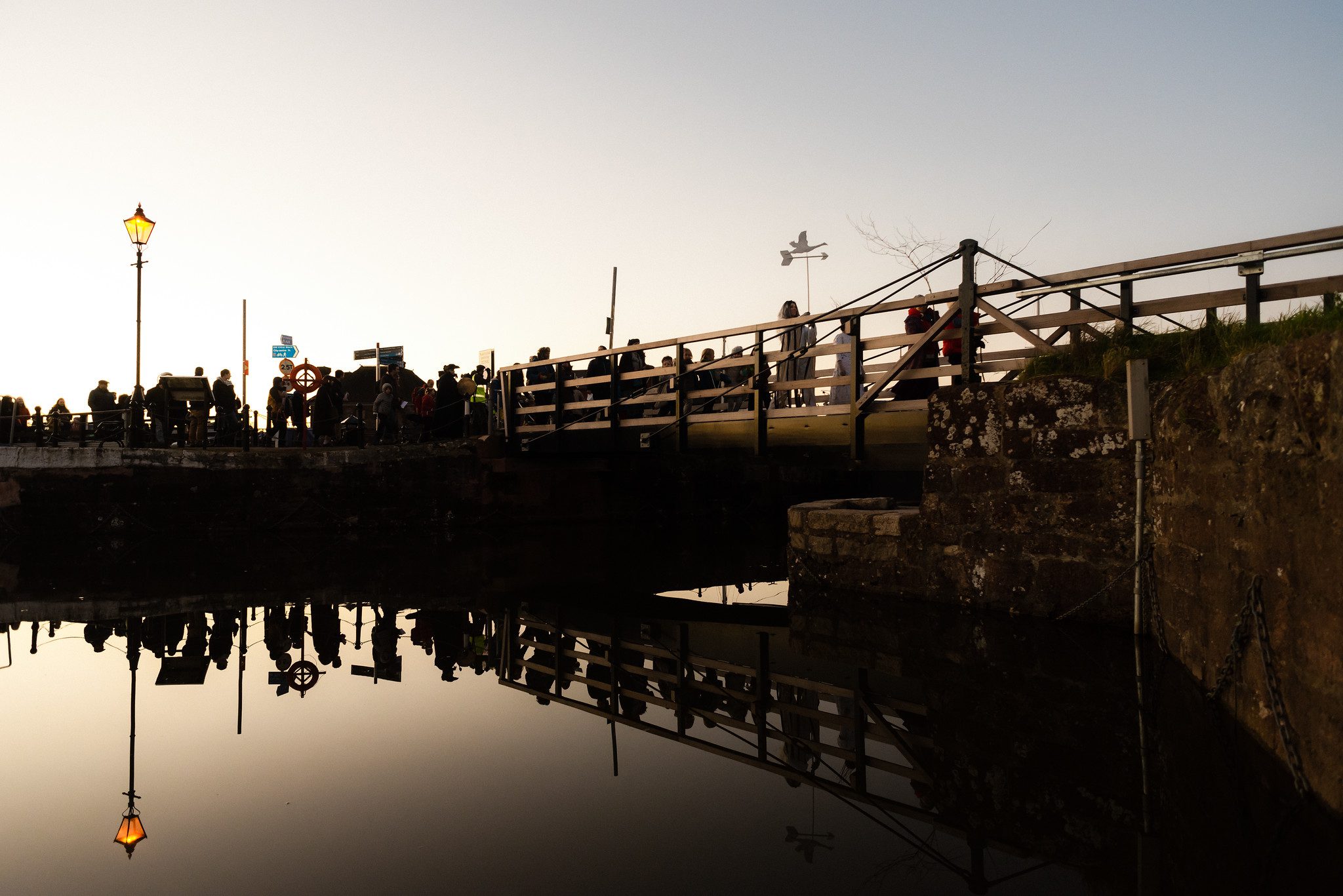
Systems thinking and permaculture both underpin this way of working. Permaculture design principles come from closely observing natural systems and drawing these observations into active constituents of designing human systems or projects. For example ‘edge’ in an eco-system is the dynamic, productive zone where two different systems such as woodland and grassland meet and overlap leading to an abundance of species from each ecosystem (‘niche’ species), perhaps interacting as well as unique species adapted to this edge where there is more movement and flux and a range of different conditions. Edges can also be the space between disciplines, between different generations, cultures or groups of people.
I’m conscious of legacy. I view legacy as a practical and tangible action coming from a project or the building of lasting memories for people, perhaps a stimulus to shift or choose a different way of doing things, a different way of doing, seeing or being. Legacy often involves people relating to their environment in a different way in the future for example through the care of fruit trees planted in public space which they now spend more time in. Legacy as adding to the cultural weave or unfolding narrative of a place.
Local and global context shapes where I work, who I work with, the materials I work with. I aim to minimise my ecological footprint and produce less and less ‘stuff’. The materials I work with are as much as possible biodegradable, recycled or organic.
There is a whole world of post studio practices, and of artists who see themselves not just as makers of valuable commodity objects, but who see themselves as active participants in a global world, and who are willing to make art in the service of something more positively social or environmental. ….. That often entails …… a willingness to embrace a healthy confusion of genres, to cross boundaries and disciplines at will. ….. from Suzy Gablik, The Re-enchantement of Art
Working with and commissioning other artists and other specialists to share and pool knowledge and offer different perspectives gives a join-upness or multi-dimensionality. Starting to experience ecosystems, and all functioning systems as complex series of dynamic interrelationships is the first part of really understanding how the climate and ecological crisis impacts everything, everybody and everywhere. Do we experience the world as something we are part of or as something we are separate from? The work oscillates between the two poles of an intimate experience, often tied to the local, close at hand, immediate, visceral, something that can be physically experienced and the global- these bigger systems that we are all part of, that we can’t see all the time but are coursing around us, through us, impacting us and joining us up – often invisibly.
In Running with Trees, a performance-run of approx. 5km scripted with Dr. Tom Powell (Global Systems Institute, University of Exeter) I explore with people the intimate relationship with trees, the carbon cycle & climate change starting from paying attention to our own breathing. I keep expanding the frame outwards from our own breath (here and now, visceral, embodied), to explaining the respiration of individual trees, to the collective breathing of trees around the world – the earth’s breathing (imaginative). This leads to sharing the story of the impact of increasing C02 levels through burning fossil fuels, widespread deforestation and destruction of habitats which reduces the capacity of the earth to breathe back in that carbon (knowing). At the end of the run (by now breathing heavily with oxygen and carbon dioxide moving in and out of our bodies) we have a shared moment when we consider the kinship between humans and other living beings on the planet (completing the loop).
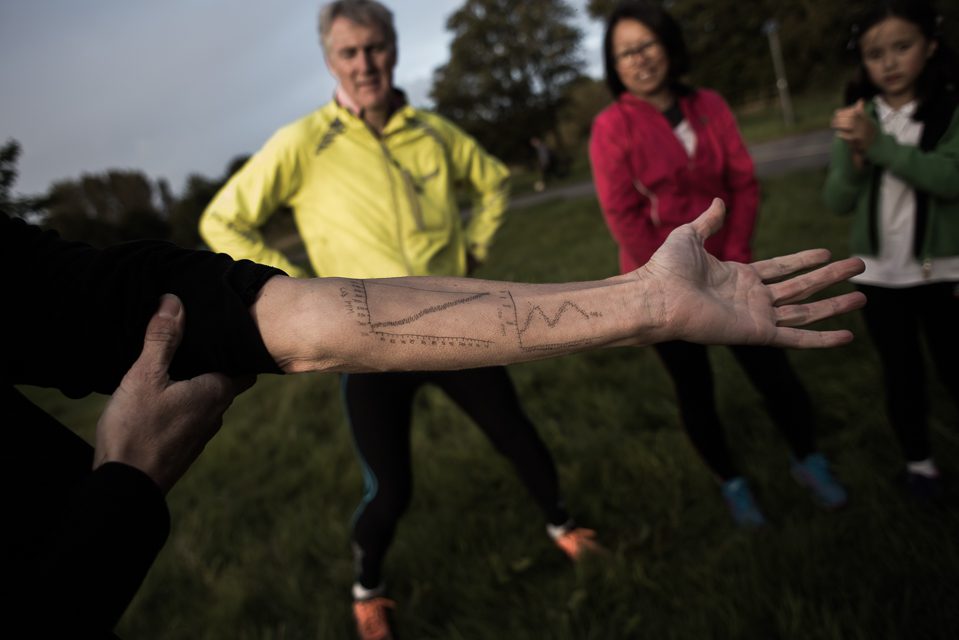
A Field of Wheat, a collaboration with farmer Peter Lundgren, artist Ruth Levene and a collective of 42 people, we focused for a year on a 22 acre field in Lincolnshire is another project that explores natural and human made systems in detail from multiple perspectives and different ways of knowing – through active participation, reflection and discussion, learning, making and celebrating. In this we oscillated between intimately knowing the field itself which we all experienced in person through walks and visits and celebrations on the farm to learning about the global commodities markets which were dictating the price of wheat we grew in the field, a systems that we are intimately implicated in.
Tidelines with Jo Salter and citizens of the Exe Estuary is a project that brings together local knowledge and academic research in creative ways to learn more about our changing home at a time of climate and ecological emergency. Working across disciplines to find out more about the dynamics of the estuary and coastline, the changes taking place now, predictions for the future and how these will impact the multi-species landscapes we are part of. Tidelines also connects through virtual platforms to other coastal dwellers around the world to share stories. As part of this I am exploring a collaboration with Kathy Hinde, a SWCTN data fellow and academic Sophie Nedelec to find out how acts of monitoring and listening in the estuary can activate questioning, arouses curiosity and forms the basis for a vibrant, caring relationship.
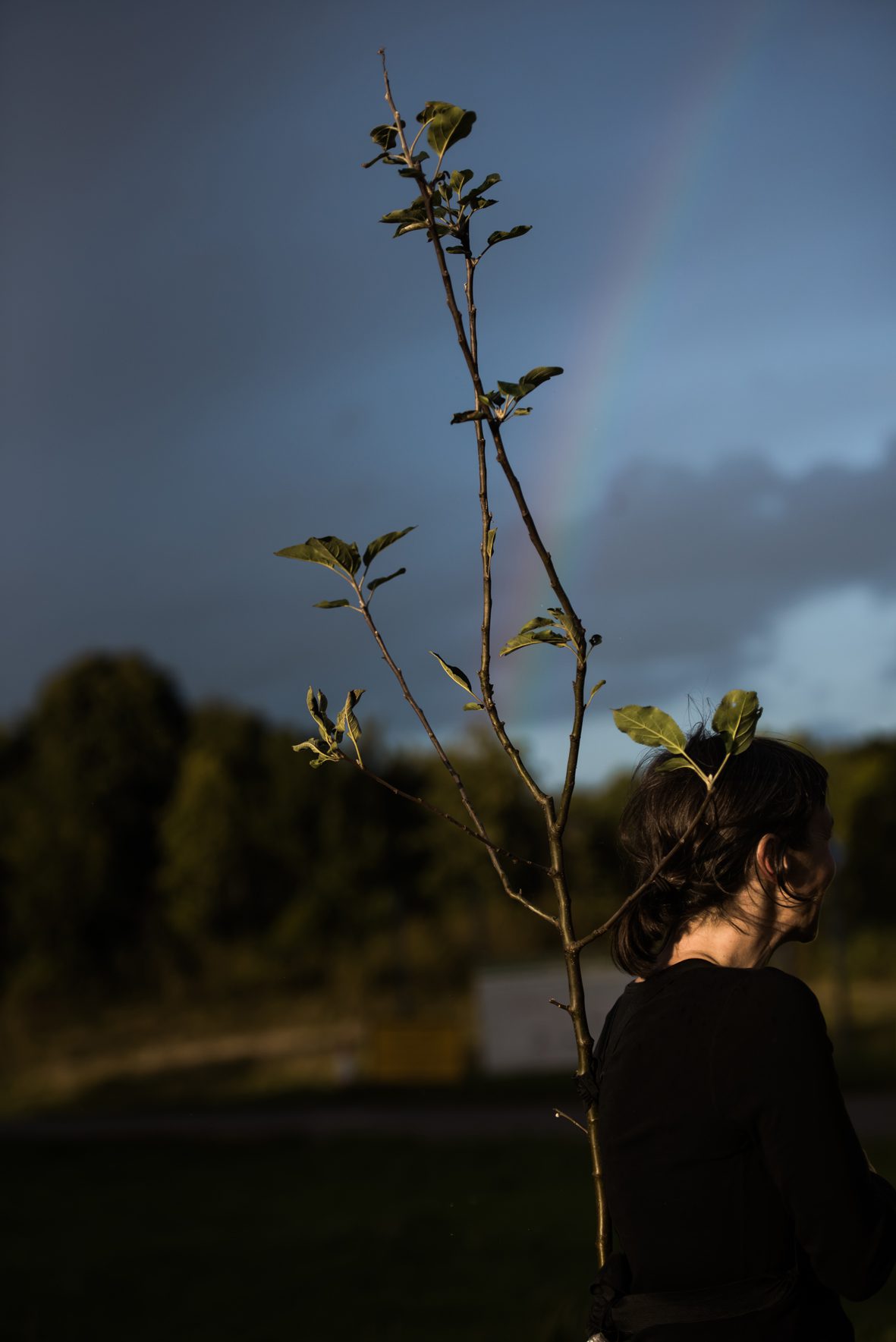
References:
Systems thinking: https://learningforsustainability.net/systems-thinking/
Permaculture- https://www.permaculture.org.uk/
Brett Bloom has formulated a useful list of Questions about Art, Ecology and the Society we Embody which I use to interrogate the design process of projects.
Projects mentioned:
Tidelines – www.tidelines.uk
A Field of Wheat – www.fieldofwheat.co.uk
FLOW – https://floworchardexeter.uk/
website: www.amculhane.co.uk

